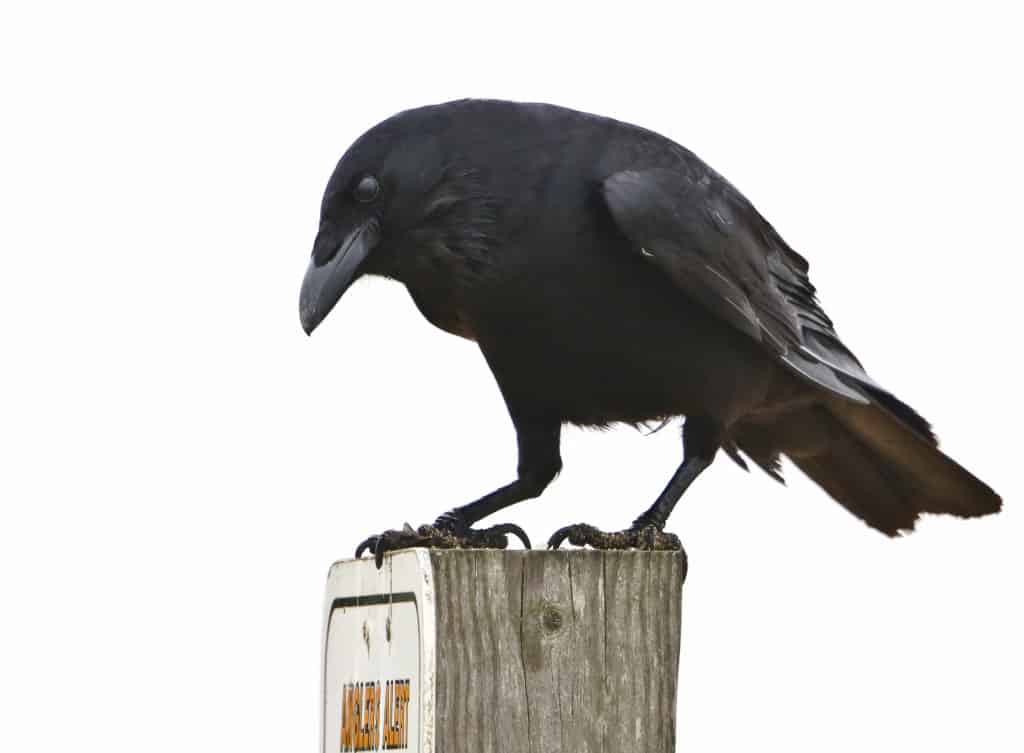Creature Feature
Fish Crows Rob Osprey Nest
By Wayne Bierbaum
Recently, I took an osprey-watching pontoon boat trip on the Patuxent River from Patuxent River Park in Prince George’s County. The naturalist, Greg Kearns, remarked that during last year’s COVID quarantine there was a poorer nesting outcome than in previous years. This year he noticed a new predator, fish crows, attacking the osprey nests.
Three crows would go to an osprey’s nest. Two would distract the mother osprey while the third would steal an egg or young bird. This predation by fish crows seems to be new to the Jug Bay area. It has been witnessed live and seen on osprey cams.
Fish crows are a smaller cousin of the common American crow and are hard to tell apart. They have a broader wing shape and a squared-off tail. Most of the time the only way to be sure which of the two you are looking at is to wait for it to speak. The common crow is noisier and will clearly say “CAW” while the fish crow will say a very nasally “CAR”.
The fish crow prefers coastal areas and feeds on almost anything it can find including mollusks, fish, insects, and the remains of human picnics. The two crow populations do overlap with the common crow being the dominant species.
Like all crow-like birds (the genus Corvus) the fish crow is a highly intelligent social bird. They work together in small groups and share the tasks of rearing young, finding food, protecting territory and defending each other. They are willing to live near humans and will steal food or tear into garbage if given a chance. Their social groups are generally small, under a dozen, and they are less commonly found in large gatherings like the common crow. Fish crows can be found at Sandy Point Park. I have never been there without hearing or seeing at least one.
Hopefully the osprey nest attacks will stop and not be taught to other crows or passed on to the younger birds from that group.


